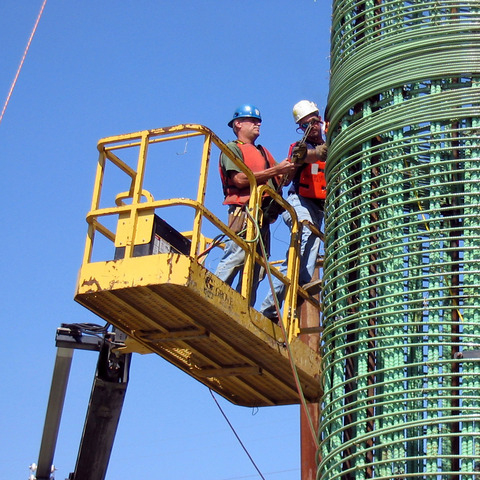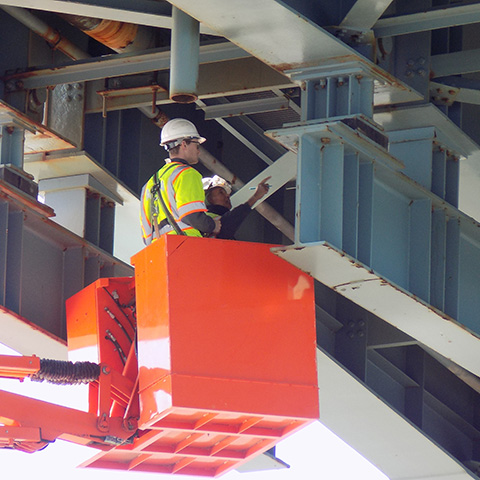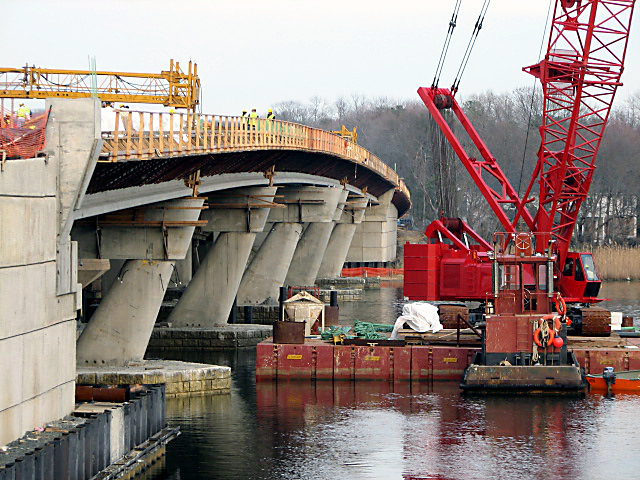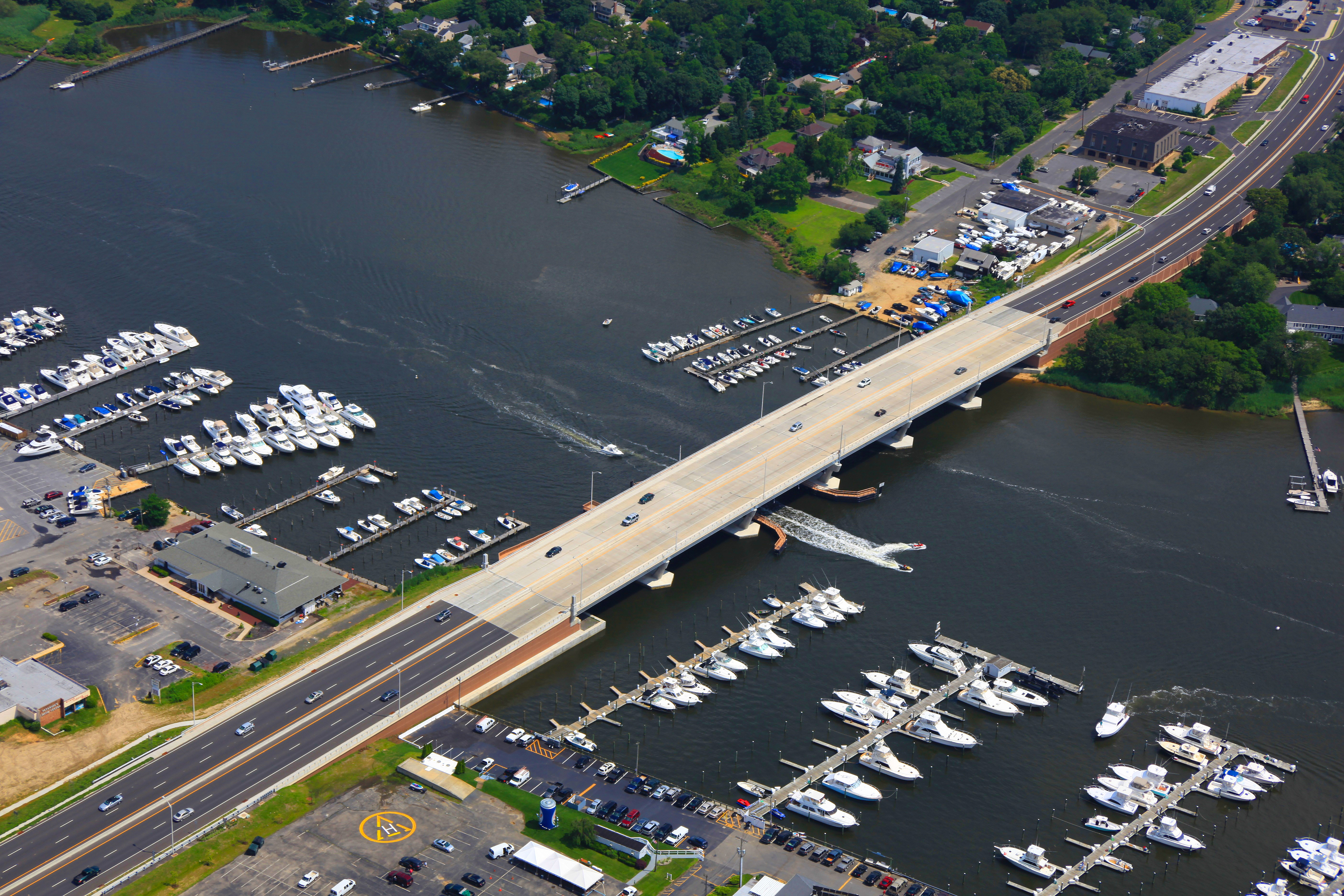Project Type: Geotechnical Engineering
Route 70 Over Manasquan River
Monmouth and Ocean Counties, New Jersey
The Route 70 over Manasquan River Bridge serves vehicular, pedestrian and marine traffic and is a gateway to both Monmouth and Ocean Counties in New Jersey. Constructed in 1936, the previous bridge was 625-foot long with a single leaf bascule span over a navigation channel. The 17 approach spans were supported on reinforced concrete pile bents. Since the deteriorated bridge was structurally deficient and functionally obsolete with 11-foot travel lanes and a 15-foot vertical underclearance, it was recommended for replacement.
In 2001 Arora and Associates, P.C. was asked by the New Jersey Department of Transportation to advance the Initially Preferred Alternative through Final Design. Arora performed an alternatives analysis considering the long-term transportation needs of the Route 70 corridor and the Manasquan River, the functioning of the local roadway network, the alignment of the proposed roadway, and constructibility. To set the bridge height, a Vessel Height Survey was performed using state-of-the-art reflectorless survey equipment. Arora also interviewed local marina owners and conducted public information sessions with the community stakeholders. Based on the study results, Arora recommended providing a 25-foot-high fixed bridge, shifting and widening the navigation channel to 75-feet, reducing the length and width of the bridge, removing a 10-foot acceleration lane, and eliminating a grade separated interchange. These changes to the project footprint minimized the amount of right-of-way required and reduced the project cost by over $10 million.
At the request of the Federal Highway Administration, a deep foundation calibration study was performed to compare the foundation design that would result from the implementation of the proposed revisions to Section 10 of the AASHTO LRFD Bridge Design Specifications, 3rd Edition to the foundation design performed using the then current 2nd Edition AASHTO LRFD Specifications. The study considered both driven piles and drilled shafts, and in each case the driven pile foundations were found to be the most cost-effective solution.
The bridge carries the widened section of Route 70 across the Manasquan River and completes the dualization of the corridor. The bridge has a 12-foot median, two 12-foot lanes and one 10-foot shoulder in each direction. Sidewalks and parapets are included on each side of the bridge resulting in an overall width of 94’-8”. The new twin 724-foot-long structures are each composed of two three-span continuous superstructure units with 8,000 psi AASHTO Bulb Tee Girders spaced at 8’-0” on center. Precast post-tensioned pier columns and cap beams were utilized for the piers. The pier foundations were constructed within precast concrete cofferdam shells providing both driving templates for the concrete-filled pipe piles and architecturally treated formwork for the footings. This saved construction time and materials, eliminated the need for traditional cofferdams, and minimized disturbance of the riverbed. High Performance Concrete was used throughout the bridge for added durability.
The project also addressed the community’s need for a well-balanced, aesthetically pleasing structure in this unique river environment. In remembrance of the 170 people from Monmouth and Ocean Counties who died in the 9/11 terrorist attacks, the bridge was designated as New Jersey’s “September 11 Memorial Bridge”
. The project scope was enhanced to include architectural treatments to the piers and parapets, monuments, signage, plantings, and a Public Access Platform. As part of the NJDOT community outreach effort, a project website was developed to communicate these changes to the project stakeholders.
In addition to the bridge replacement and roadway widening, the project included a bridge fender system, noise walls, retaining walls, bulkheads, traffic signals, ramps, water quality stormwater management retention basins and manufactured treatment devices, highway lighting, ITS improvements, and utility relocations. During construction, Arora provided onsite consultation with the contractor and the Resident Engineer. Since Route 70 is a coastal evacuation route, the project was constructed in stages while maintaining two lanes of traffic in each direction. The innovative precast pier design and construction enabled the project to be completed 25 months ahead of schedule. Since its completion, the project has been recognized for excellence and has received several “Project of the Year” awards.





